Applications
Imaging Sun Damage on Skin and Sunscreen
See Sun Damage on Skin and Visualize Sunscreen Being Applied – click on lower right corner to make this full screen:
One of the ways that sun damage on skin manifests itself is as dark patches of excess melanin produced in response to UV exposure. This excess melanin is much easier to visualize in the UV than in the visible band. You can also see absorber sunscreen with a UV imaging system: it looks like black paint! Reflective sunscreen is harder to see, but usually is apparent, as it will look lighter than the untreated skin.
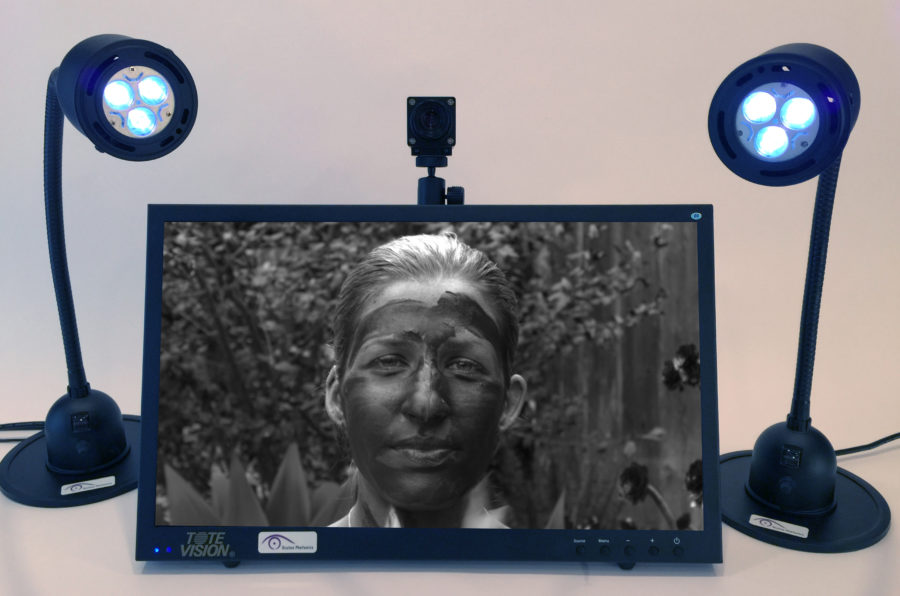
Zoe applies sunscreen as viewed by the UVSIS HD

Zoe imaged in sunlight with UVSIS HD camera

Zoe imaged in sunlight with UVSIS HD camera after applying 15 SPF Alba Botanica Daily Shade sunscreen

Color image of Zoe showing the transparency of the sunscreen to the eye
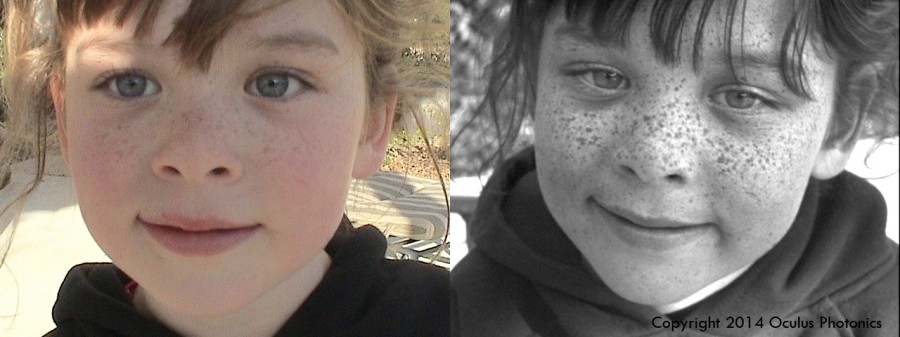
This is a 6 year old girl with some sun-induced hyper-pigmentation, and some natural freckling.
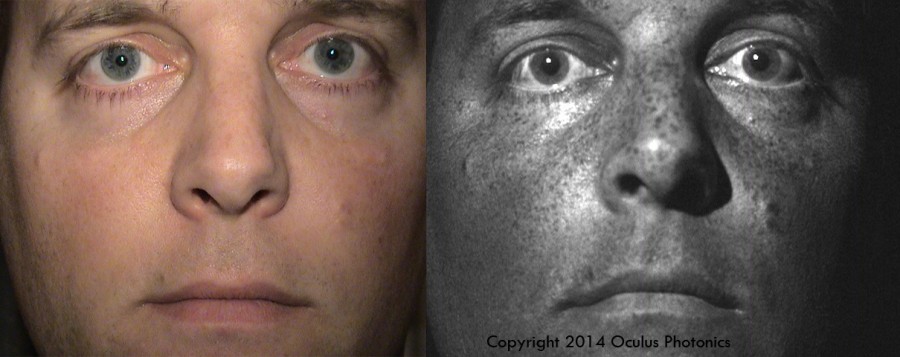
Facial skin with mild sun damage. Left-Visible, Right-UV
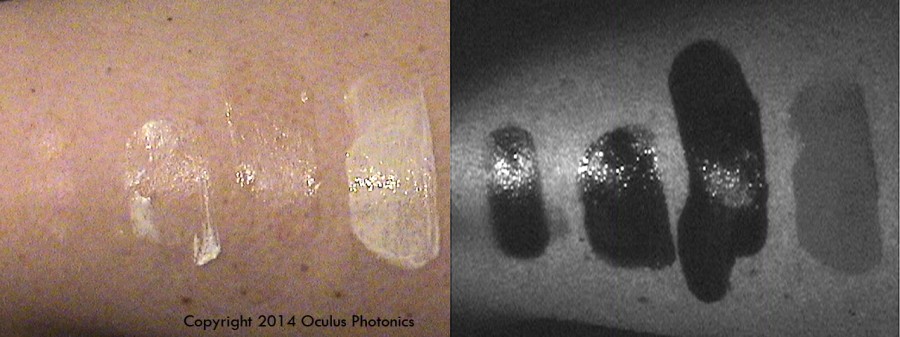
These are samples of sunblocks with various degrees of sun protection factor: SFP 45, SPF 25, SPF 36 and SPF 18, respectively. The three sunblocks on the left contain UV absorbers such as avobenzone, and the one on the right contains titanium dioxide, a UV reflector.
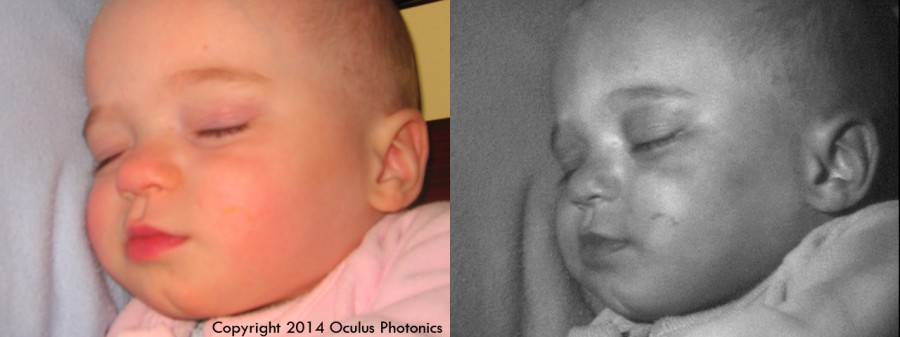
This baby was 11 months old at the time these pictures were taken. She had had very minimal exposure to the sun, and always with sunblock, thus there is no evidence of sun-induced hyper-pigmentation. The mark on her cheek is a scratch.
